Wilderness Survival Guide: A Comprehensive and Practical Approach
To survive in the wilderness, one must have a specialised set of skills, keep a calm demeanour, and make substantial preparations. This comprehensive guide will provide you with the knowledge you need to navigate and thrive in the great outdoors, whether you are an avid adventurer or find yourself unexpectedly pushed into a survival situation.
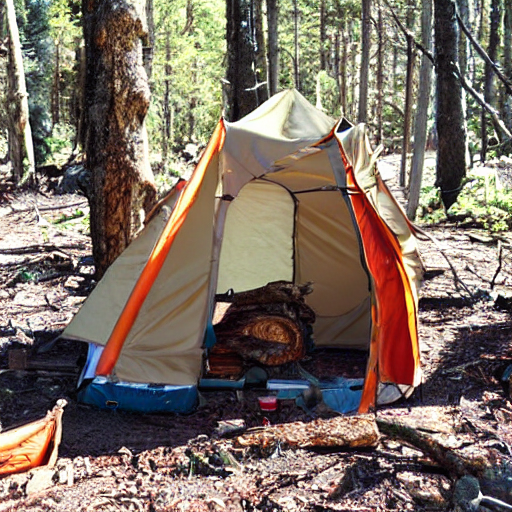
Cultivate the Right Mindset: Stay Calm and Assess
The key to developing an effective survival plan is cultivating the proper mindset. When faced with adversity, maintaining a calm and serene mental state is your most significant edge, especially if you are facing the chance of survival. When the human mind is confused by panic, it tends to make rash decisions and make faulty judgements. As a result, the ability to keep composure is critical.
Consider yourself to be in the middle of a huge, undiscovered wilderness, far from the familiar comforts of city life. Fear can easily enter in, but in those first moments of doubt, it is vital to take a huge step back to regain your composure. Panic can be contagious, making the problems you’re facing even more difficult to deal with. A calm mind, on the other hand, serves as a steady compass, guiding you through the turbulent sea of uncertainty in which you find yourself.
After you have calmed your worried thoughts and taken a deep breath, you should shift your focus to a critical evaluation of your surroundings. To accomplish this, you must be able to keep a watchful eye on the resources accessible to you and be aware of any current threats lying in the wilderness. There could be dangers encountered, such as difficult terrain or wild animals. What resources are available for providing shelter, water, and signalling?
The evaluation procedure is more than just a normal exercise; it acts as the foundation for your survival plan. By doing this comprehensive review, you will be able to make accurate judgements, properly prioritise activities, and design a plan of action that is in keeping with the challenges presented by the wilderness.
The motto “stay calm and assess” essentially expresses the psychological resilience required when presented with unexpected obstacles. It is the decisive moment when you recognise the gravity of the situation but choose to respond calmly rather than with frenzied reactions. By remaining calm and doing a careful assessment, you may provide the groundwork for a strategic approach to wilderness survival. When you are in the midst of the unknown, keep in mind that your thoughts may be the key that unlocks the door to survival.
The Rule of Survival Priorities
Understanding the survival priority rule is the choreography required to properly navigate the wilderness, which is a complex dance with nature. Consider it a strategic roadmap that will guide your actions in a survival emergency, ensuring that the most critical needs are handled systematically and successfully.
The necessity to prioritise protection is one of the most significant features of this particular guideline. There is no space for discussion when it comes to your safety, and creating a safe workplace comes first. In this context, “protecting yourself from immediate threats” refers to taking precautions against the elements, wildlife, and other potential hazards that may exist in the outdoors.
The focus will immediately move to the location when the protective covering has been built. A safe and secure area could act as your haven. A solid shelter not only shelters you from the elements, but it also serves as a psychological anchor, giving you a place to regroup, devise strategy, and weather the trials that the wilderness may throw at you.
Water, sometimes known as the “elixir of life,” takes the next spot in the hierarchy of survival priorities. It is critical to locate and secure a source of safe drinking water. Dehydration can occur quickly, affecting both your physical and mental capacities. You can use boiling, purification pills, or a dependable water filter to convert potentially tainted water into a resource that can sustain life.
After the issues of safety, location, and water have been addressed, the focus switches to nutrition. The demand for food, while essential, takes a back place to a more immediate need. During this stage, you will engage in activities such as exploring for food plants, learning basic trapping skills, and attempting to fish. As a result, nature provides you with both food and nutrients.
The act of signalling completes the rule of survival priorities. After your basic prerequisites have been met, it is time to make your presence known. This step boosts your chances of being detected and saved, whether by the use of bright colours, signalling equipment like whistles and mirrors, or the production of distinctive signals.
The survival priority rule acts as a compass in the wilderness, ensuring that you approach the challenges carefully. Following this systematic strategy not only increases your chances of survival, but it also gives you a sense of control in an otherwise unpredictable environment. The turmoil of survival is transformed into a more manageable journey that leads to rescue and safety by using this road plan.
Shelter Building: Your First Line of Defense
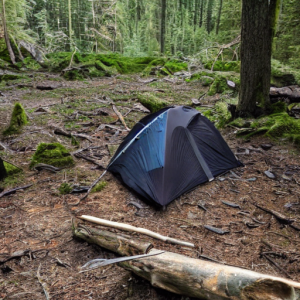
A shelter’s construction emerges as the cornerstone in the intricate tapestry that is a wilderness survival guide. It’s your first line of defence against the elements and the unpredictable nature of the great outdoors. One of the most crucial abilities is the ability to build a safe haven that protects you from bad weather and serves as a psychological anchor in times of uncertainty. This ability extends beyond simply locating a safe haven.
When faced with the necessity of locating a place to reside, your resourcefulness will prove to be a useful ally. You go out on a mission to build a safe and secure region by utilising the plentiful natural resources in the wilderness or any equipment that you may have on hand. This can be accomplished by building a temporary lean-to out of sturdy branches and foliage, repurposing a tarp or emergency blanket, or even excavating into the ground to provide more protection.
A fundamental understanding of the techniques involved in creating a shelter is critical to one’s survival. Building a physical barrier against the elements is not enough; you must also enhance your ability to tolerate bad situations. Choosing a location that is close to resources such as water and plants that may be utilised for foraging is an important step in mastering the art of creating a shelter. Priorities for safety and visibility must also be considered in this setting.
Your shelter is more than just a physical structure; it evolves into a psychological haven, delivering a sense of comfort amid the wilderness’ unpredictability. Building a shelter is more than just a practical task; it is a strategic decision that puts you in a position to tackle the challenges that lie ahead, giving you a sense of control in an otherwise uncertain situation.
When viewed through the lens of a wilderness survival guide, the ability to build shelter is a fundamental and necessary skill. The guide’s main goal is to educate people with the knowledge and skills they need to thrive in the wilderness, and this perfectly coincides with that vision. If you learn the ability of shelter building, you can transform yourself from a passive participant in the wilderness to an active, flexible survivor who is resilient in the face of adversity. If you embrace this fundamental talent, you will have created the foundation for a successful journey through the difficulties of the wilderness survival guide.
Water Procurement: Quenching Your Thirst Safely
The quest for water is one of the most important chapters, and it is critical to become an expert in the art of water acquisition. If you want to satiate your thirst in the wilderness without jeopardising your safety, you must focus on two things: identifying sources of water and creating effective purifying methods. In this wilderness survival guide, we will examine the essential strategies required to provide a secure and sustainable water supply.
First and foremost, the importance of water in the natural world cannot be overstated. Hydration is more than just a creature’s comfort; it is a lifeline that keeps the body and the individual’s cognitive capacities working. As a result, the first thing you need to do is discover nearby water sources. Rivers, lakes, and streams are typically the most promising prospects since they serve as reservoirs for nature in the vast wilderness.
However, the sheer presence of water does not always imply that it is clean and safe to drink. The purification process, which is the second pillar of water acquisition, begins at this point. The word employed in wilderness survival language is unequivocal: make purification your priority to ensure that the water you drink is safe. When it comes to techniques, boiling is regarded as one of the oldest and most dependable. All that is required is a fuel source. By disinfecting water by heating it to a boil for a few minutes, you can effectively eliminate dangerous microorganisms.
If you prefer a more modern and convenient method, water purification tablets or a water filter can be your tiny friends. These portable and simple-to-use devices defend against contaminants that are transported by water. They give another layer of protection to your quest for safe hydration. You should choose the best technique based on the resources you have available and the amount of urgency of your requirement.
Foraging and Food Procurement: Nature’s Pantry
The capacity to forage and gather food in the vast outdoors is regarded as essential for both survivalists and outdoor enthusiasts. There is a broad variety of edible plants that can be found in nature’s pantry; it is critical to know how to identify these plants in your area. It is possible to improve your ability to survive in the wild by becoming acquainted with the local vegetation.
To correctly identify edible plants, a combination of botanical knowledge and hands-on experience is essential. The use of guide books, online resources, and the support of local experts can all help you learn to distinguish between edible and potentially poisonous flora. It is critical to remember to exercise caution because the consequences of wrong identification might be serious.
When it comes to diversifying your food sources, it is critical to understand not only how to forage for plants but also particular fishing and trapping techniques. To significantly increase your food source, you may learn to make a fishing rod out of readily available materials or set up basic traps with cheaply available supplies. A comprehensive awareness of the behaviour of the local fauna is required for successful fishing and trapping. Because diverse ecosystems necessitate different techniques, you must adapt your methods to the specific ecology in which you find yourself.
Foraging is not only a useful skill, but it also allows you to build a deeper connection with the natural world. Both developing a regard for the environment and supporting a sustainable approach to food purchase are results of this. Increasing your ability to survive in the environment necessitates a thorough awareness of the seasonal availability of various plants as well as the life cycles of local animals.
Navigation Skills: Finding Your Way Back
If you are going to venture into the vast wilderness, you must be able to navigate, as this is a critical safeguard against the potentially terrifying risk of becoming lost. Outdoor enthusiasts who are armed with a map and compass can navigate their way through a range of landscapes for a safe and enjoyable experience.
It is a key habit that entails always carrying a map and compass with you. This acts as a reliable backup to existing navigation equipment. A map depicts the terrain from above, highlighting major landmarks, highways, and topographical characteristics such as mountains and valleys. These devices provide a fail-safe mechanism for maintaining a sense of direction even in areas where GPS signals are unavailable. A compass, which points in the direction of magnetic north, completes the set.
It is critical to become acquainted with fundamental navigational abilities to successfully use maps and compasses. To accomplish this, one must be able to read topographic maps, understand contour lines, and compute distances. Practice in a variety of environments helps to refine these skills, allowing them to be used effortlessly when exploring unfamiliar terrains. Furthermore, it is critical to retain a firm grasp of the present weather conditions, as changes in visibility may impact navigation.
In the event of an unexpected incident, having signalling devices on hand could save your life. Whistles and mirrors are not only small but also lightweight tools for attracting attention across long distances. Mirrors, on the other hand, can be used to signal to rescue teams or passing aircraft by reflecting sunlight, whereas the shrill sound of a whistle can go a long distance in open areas. By including these items in your outdoor gear, you will improve your ability to communicate distress signals and increase the likelihood of being rescued quickly in the event of an emergency.
Finally, having a map and compass, as well as learning how to navigate well, is a comprehensive plan for guaranteeing that you can safely return home after participating in any outdoor activity. By incorporating these tactics into your outdoor routine, you not only lessen your chances of becoming disoriented, but you also develop a stronger connection with the landscapes you visit, which creates a sense of self-reliance and adventure.
First Aid Essentials: Your Health Matters
The cornerstone of safe outdoor adventure is first aid supplies, emphasising the fundamental principle that your health is the most essential thing in the world. The learning of core first aid skills, as well as the carrying of a well-stocked first aid kit, are both necessary safeguards to ensure a safe and enjoyable time spent outside.
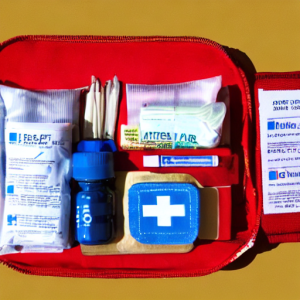
If an unexpected injury or medical crisis occurs, a well-stocked first aid bag can serve as a portable lifeline. Bandages, sticky tape, antiseptic wipes, pain medications, tweezers, scissors, and any personal prescriptions that may be required should all be carried. Furthermore, consider carrying supplies that are relevant to the activities you will be performing outside, such as a blister treatment kit for hikers or a snakebite kit for persons who will be exploring areas with venomous reptiles.
It is also critical to understand how to use the products in your first aid kit. Understanding the principles of first aid can make a significant difference in an emergency. In an emergency, the ability to clean and dress wounds, apply bandages, and administer cardiopulmonary resuscitation (CPR) can be incredibly useful. You can improve your knowledge of these skills by using a range of tools, such as online tutorials and local first-aid classes. These resources can offer you with useful information that can be useful in instances where medical aid is not readily available.
Personal safety and well-being should be prioritised, which involves not only the physical aspects of first aid but also the mental and emotional concerns that must be considered. To give preventive care, it is critical to be aware of your physical limitations, stay hydrated, and recognise the signs of weariness. People who like spending time outside should also be aware of the potential psychological harm that can be caused by unplanned situations such as becoming lost or encountering unfavourable weather conditions. When it comes to emphasising one’s entire health in outdoor settings, mental readiness and resilience are critical components.
Essential Tools: Your Wilderness Toolkit
Possessing the proper equipment might mean the difference between thriving in the wilderness and struggling to tolerate the hardships that it imposes. A well-equipped wilderness toolkit provides essential equipment for a wide range of activities, from shelter construction to identifying and resolving unforeseen challenges. Some of the important items in your survival kit should include paracord, a knife, and a multi-tool. Each of these tools adds to the adaptability and durability of your survival kit.
The most critical piece of wilderness kit is a high-quality knife. It can be utilised for a wide range of tasks, from food preparation to chopping branches for shelter construction. Because it can be used for many tasks, such as carving, hunting, and even self-defense, it is critical to choose a knife that is both durable and sharp. A trusty knife can become an enduring companion in the wilderness if properly cared for and maintained.
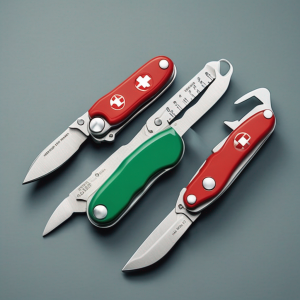
A multi-tool, which is an additional crucial component because it gives a compact solution to numerous problems, should be included in your survival toolbox. A multi-tool is a versatile resource that can be used to repair equipment, build structures, or even devise solutions to unexpected challenges. It has a range of uses, including pliers, screwdrivers, scissors, and other similar devices. It is easy to move due to its small size, and it ensures that you always have a selection of vital equipment within easy reach.
Paracord, which is an abbreviation for “parachute cord,” is a valuable tool because it is both long-lasting and multipurpose. Because of its endurance and adaptability, it is a fantastic resource for building shelters, securing equipment, and creating non-traditional items. It is possible to unwind the paracord, revealing multiple smaller strands, each with its function. In a survival situation, paracord can be used for a broad range of applications, from building snares and traps to making emergency repairs.
Include this equipment in your survival kit to guarantee that you are well-prepared for the unpredictability of the wilderness. These instruments can not only perform the main duties that have been stated, but they can also be very useful in the design of signalling devices, the establishment of foraging traps, and even the management of medical problems. Recognising the variety of your wilderness gear is an excellent method to boost your resourcefulness and adaptability when faced with unexpected scenarios.
When choosing a knife for your wilderness kit, you should examine the blade material, handle design, and overall lifetime of the knife. To select a knife that is both sharp enough for cutting jobs and durable enough for more demanding tasks, seek for one that strikes a balance between the two.
There are various types of paracord, and not all of them are created equal. Type III paracord, sometimes known as military-spec paracord, is well-known for its strength and dependability. Because it may be used for jobs requiring resistance and durability in harsh settings, you should ensure that the paracord in your kit meets the criteria that are required of it.
Maintain the finest possible condition of your tools by doing routine inspections and maintenance on them. A knife, a multi-tool, and a paracord in good condition and well-maintained are assets that can be relied on in critical situations, improving your ability to navigate and thrive in the wilderness.
Dressing for Survival: The Importance of Layering
In situations when the weather is uncertain, mastering the technique of layering could be a game changer. Dressing appropriately for survival in the wilderness is critical to your overall well-being. Layering is a versatile technique that allows you to adjust your body temperature by adding or removing layers of clothing depending on the situation. This not only aids in adjusting to changing weather conditions, but also prevents overheating and freezing, both of which can be fatal in a survival situation.
The fundamental function of the first layer, often known as the base layer, is moisture management. Moisture-wicking clothing is crucial because it draws sweat away from your skin, reducing hypothermia and keeping you cool and dry. This layer is especially beneficial when participating in strenuous activities that create perspiration, such as trekking, or when people must move rapidly, such as in an emergency.
The insulating layer follows, which is responsible for providing warmth by encapsulating and maintaining the body’s fat. The use of insulating materials such as fleece or down is highly recommended because they give lightweight warmth without adding undue bulk. This layer can be changed depending on the temperature and the amount of activity going on. This layer is critical for keeping warm in cold weather.
It is the outermost layer, also known as the shell, that acts as a barrier against wind, rain, and snow. It must also be waterproof and windproof in order to protect you from the elements. You should invest in a high-quality breathable jacket or outer shell to decrease moisture collection caused by sweating while still providing appropriate protection against the elements.
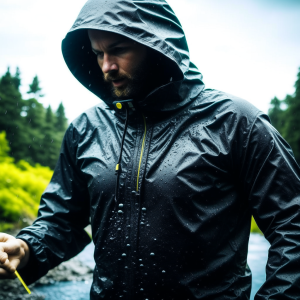
You should not only dress in layers, but you should also have rain gear in your survival kit. It is critical to stay dry to avoid hypothermia, which can develop quickly when exposed to both cold and damp circumstances. There are a few things you’ll need, such as a rain cover for your bag, a waterproof jacket and trousers. If you want to make sure your rain gear is as effective as possible, search for items with taped seams and durable and water-repellent (DWR) coatings.
It is critical to consider the season, terrain, and the probability of weather swings when deciding how many layers to wear and what type of clothing to wear. You will be able to maintain a pleasant body temperature if you can alter your apparel to the current conditions. This will help you to focus on the task at hand rather than fighting the environment.
Remember that good footwear is an important component of the layered strategy to survival clothing that you are pursuing. Choose boots that are not only waterproof but also robust, and that provide support and protection against the terrain you will be crossing. Blisters and frostbite are two frequent foot issues that can be avoided by keeping your feet dry and comfortable.
To protect yourself from the hazards posed by the unpredictability of the wilderness, you need become acquainted with and put into practice the notions of layering. In addition, you should dress appropriately for the weather. This strategic approach to dressing will not only make you feel more comfortable, but it will also be a key component in reducing weather-related health problems, which will contribute significantly to your total survival strategy.
Wildlife Awareness: Understanding Your Surroundings
Wildlife awareness is a vital component of outdoor survival since it requires a thorough understanding of the local flora and wildlife, as well as the potential risks that they may provide. Your ability to make informed decisions allows you to reduce risks and improve your overall safety when out in nature. Being aware of your surroundings and the wildlife that inhabits them allows you to make judgements.
When it comes to wildlife awareness, one of the first things you should do is learn about the native creatures in the area you are visiting. Birds, reptiles, insects, and mammals are among the many species that call varied areas home. It is critical to have a full understanding of these organisms’ habits, behaviours, and surroundings to anticipate probable interactions and avoid unexpected confrontations.
An extra necessary skill is the ability to recognise signs of wildlife activity. Observing animal tracks, droppings, nests, and other markers can provide useful information about the presence of animals in your surroundings. For example, being able to recognise bear tracks or distinguish between the cries of various bird species could serve as a warning system for potential interactions with animals, allowing you to adjust your approach accordingly.
It is critical for your protection that you have a strong awareness of the potential risks that specific types of wildlife may provide. Many animals are harmless and would prefer to avoid human contact. Some animals, on the other hand, may perceive people as threats and react defensively. Venomous snakes, big predators, and territorial animals can all pose threats if they are approached or scared. Knowing the fauna of the area allows you to take precautions such as keeping a safe distance and securing food. You may avoid bringing unwanted attention to oneself this way.
Not only should you be wary of larger animals, but you should also be wary of insect life, especially in locations where specific species may carry diseases. Some of the most significant components of wildlife awareness are knowing how to protect yourself from bug bites, recognising the symptoms of illnesses spread by insects, and having the required repellents or protective clothing on hand.
Understanding the seasonal patterns of fauna is another advantage. Mating and migratory seasons are two examples of times of year when animals may be more active than at other times. The capacity to recognise these patterns allows you to anticipate possible encounters and adjust your behaviour in response to such encounters.
By incorporating animal awareness into your outdoor excursions, you can improve your entire experience while also contributing to the preservation of natural settings. To engage with animals properly, you should observe them from a distance, attempt to have as little influence on their surroundings as possible, and avoid behaviours that could frighten or harm them.
To transform oneself from an explorer to a caretaker of the natural world, you must first master the local species. This increased awareness not only helps to establish a deeper connection with the natural world, but it also ensures that you can navigate the wilderness with reverence and mindfulness, minimising hazards and maximising the advantages of your time spent outside.
Visibility: Making Yourself Seen and Heard
Visibility is a major component of safety in the wilderness, and it is critical to make yourself visible and heard to both prevent accidents and attract attention in the event of an emergency. When it comes to improving your visibility in outdoor settings, one simple and effective way is to wear bright colours. When you choose bright and vivid colours, such as orange, red, or neon colours, you stand out against the natural background, making it easier for others to recognise you from a distance.
In addition to wearing bright clothing, including reflective materials into your wardrobe is another approach to boost your visibility, especially in low-light conditions. Reflective strips on your clothing, backpacks, or other gear catch and reflect light, increasing your visibility and decreasing the likelihood of going unnoticed. The significance of this becomes clearer in situations where you may be sharing the outdoor environment with other people who enjoy recreational pursuits, such as hunters.
Another preventative measure you can take to improve your visibility is to employ signalling devices. Whistles are great for usage in outdoor situations due to their modest size and portability. They produce a loud, noticeable sound that may be heard from a long distance. A series of whistle blows, especially in groups of three, is an internationally recognised distress signal due to its effectiveness. Mirrors, when held at the proper angle, can reflect sunlight over long distances and so serve as a visible beacon. The addition of these lightweight and simple-to-use devices into your gear significantly improves your ability to broadcast your presence to others.

Signal fires become an exceptionally important tool when visibility is limited by variables such as fog, deep forest, or darkness. One approach for attracting attention is to build a fire that is under control and using materials that produce a significant amount of smoke. When compared to the natural landscape, smoke can serve as a visible indicator of your location, which can aid in search and rescue activities.
It is critical to have a thorough awareness of the importance of both aural and visual information. In addition to the visual side, which is primarily handled by bright colours and reflective materials, audio cues, such as whistles, help to announce your presence. By combining these tactics, it is possible to provide a comprehensive approach to visibility in a variety of outdoor contexts.
It should be noted that it is critical to change your visibility tactics in response to the specific conditions and surroundings. For example, in snowy conditions, it is significantly more vital to wear brightly coloured apparel to stand out against the white background. Similarly, in densely forested areas where vision is limited, the sound of a whistle or the sight of reflective materials can be quite effective in attracting attention.
Making visibility a top priority is, in the end, a proactive step towards assuring one’s safety throughout the wilderness. Making yourself visible and audible while hiking, camping, or participating in any other outdoor activity not only reduces the likelihood of being involved in an accident, but also increases the likelihood that you will be able to respond quickly if unexpected difficulties arise.
Emergency Communication: Staying Connected
Communication in an emergency is critical for outdoor safety since it can act as a lifeline in times of distress. Carrying a whistle that can be used in an emergency is a simple yet powerful instrument that can be used to express distress sensibly. The sharp and unmistakable sound of a whistle can travel long distances, cutting through background noise and alerting people to your current situation. Because of its widespread use as a distress signal, the whistle is an essential piece of kit for anyone who appreciates outdoor excursions.
It is critical to use your mobile device for emergency communication in areas where cell phone coverage is available. Make sure your mobile device is fully charged before embarking on your outdoor trip, and if you will be travelling for an extended amount of time, consider carrying a portable charger or a solar charger. Check that you are familiar with the local authorities and emergency contact numbers, as well as any special protocols for reporting crises in the area you are investigating.
In areas with poor signal strength, text messaging may be more reliable than phone conversations. This is because text messages may have a better probability of getting through than voice calls under difficult network conditions. Text messaging also helps to extend the life of the battery, allowing you to make the most of your phone’s capabilities in the event of an emergency.
Having access to a personal locator beacon or a global positioning system (GPS) device can be very useful for emergency communication, especially in off-grid or isolated places. These devices can broadcast your GPS coordinates to emergency agencies, allowing them to respond faster and more accurately.
You should inspect your equipment regularly to ensure that all of your communication devices are in good working order. This includes testing your whistle, verifying that your phone is fully charged, and confirming that any other communication tools are operational. By completing periodic checks while on an outdoor journey, you may avoid unexpected problems and ensure that you are well-equipped to communicate effectively in the event of an emergency.
If you are unable to receive cellular phone service, you should investigate other communication equipment such as satellite phones and two-way radios. When traditional modes of communication are not viable, these devices can provide a way to stay in touch with members of your group or request assistance even when normal modes are not available.
Decision-Making: To Stay or Go?
Making decisions in the wilderness frequently hinges on the critical decision of whether to remain in one’s current place or to seek assistance. The nature of the situation, your level of preparedness, and the peculiarities of the environment are all factors to consider while considering whether to remain in one location or attempt to navigate to a safer one. Before making a decision that will protect your safety, it is critical to undertake a complete examination of the situation.
Staying still is commonly recommended in a wide range of survival conditions. Remaining in the same location increases the likelihood that search and rescue workers will be able to find you if you become lost or injured. Before you decide to stay with them, make assured that you have enough food, drink, and shelter. Putting up a recognisable signal in the region of your location can also aid in rescue efforts. You can achieve this by doing something as easy as arranging rocks or creating a large symbol on the ground that sticks out from the surroundings. This will make it easier for ground or aerial search teams to find the object.
On the other hand, there are some situations in which staying in the same location may not be the best option. If there is an immediate threat, such as a wildfire, deadly animals, or a hazardous environment, it may be safer to relocate to a more secure position. On the other hand, you should only consider moving if you have a clear sense of direction, know where you’re going, and are confident in your ability to navigate. If required, leaving a visible trail or traces behind you as you move can help search operations.
Various signals play an important role in both cases, regardless of whether you stay or go. It is critical to develop signals that are distinct from the natural environment to increase the possibility of being detected by search teams or by passers-by. You can use brightly coloured clothing, materials that reflect light, or even things from your survival gear to produce signals that stand out in the environment. The goal of these signals is to serve as visual markers that can draw the attention of rescue workers, especially in areas that are densely forested or large.
Being prepared for outdoor activities requires a fundamental understanding of the ideas that underpin the “Stay or Go” decision-making process. Before embarking on any type of adventure, make sure you are familiar with the area’s topography, weather patterns, and emergency procedures. Put yourself in a position to make well-informed decisions depending on the specific situations you may face by arming yourself with the necessary tools and knowledge. By using a deliberate and controlled approach to decision-making, you may significantly improve your safety in the wilderness. This is true whether you choose to remain in the same position and signal for help or whether you choose to find a safe way to seek help.
Learn Basic Survival Skills: Knowledge is Power
Beginning with the acquisition of core survival skills is a prerequisite for anyone planning to journey into the broad outdoors. In the domain of survival, knowledge is power, and having a repertoire of essential abilities may be the key to overcoming obstacles that were not foreseen. The ability to tie knots, start a fire, and build a shelter are the three fundamental skills that form the cornerstone of survival knowledge. These abilities provide a useful collection of tools for dealing with a variety of situations.
The ability to tie knots is one of the most versatile talents that can be used in a range of survival scenarios. It is critical to be able to tie efficient knots when performing tasks such as fastening a tarp for shelter and building homemade tools. Learn simple knots like the bowline, square knot, and taut-line hitch to improve your flexibility in the wild. These knots allow you to secure, package, and fasten things, which boosts your versatility.
The ability to master the art of starting a fire is a skill that goes beyond its basic simplicity. A fire can not only provide warmth, but it can also be used to cleanse water, cook food, and signal for help during a crisis. You can prepare to ignite a flame in a range of situations by studying a variety of fire-starting methods, such as using a fire starter, flint and steel, or even more primitive methods based on friction.
The capacity to build shelters is one of the abilities that directly addresses the need for protection from the elements. Whether you find yourself unexpectedly caught in a storm or face the prospect of spending the night outside, it is critical to have a basic understanding of how to build a shelter that is both practical and simple. It is feasible to provide critical protection against precipitation, wind, or cold temperatures by using readily accessible items to build a debris hut, A-frame, or lean-to.
Although acquiring knowledge from reading or watching tutorials is useful, acquiring survival skills through hands-on experience is required to internalise them. Develop your skills by practicing knot tying until it becomes second nature, experimenting with different fire-starting procedures, and creating shelters under controlled situations. These activities will assist you in developing your skills. By engaging in these activities, you will not only enhance your skills, but you will also gain the confidence to use those talents effectively in real-world situations.
In addition to the core abilities described above, you can improve your readiness by expanding your grasp of survival skills to include navigation, foraging, and first aid. Participating in seminars, workshops, or even outdoor excursions with expert guides can provide you with a wonderful opportunity to practise and enhance your skills under the leadership of an experienced instructor.
Finally, mastering core survival skills is a journey that takes time. Regular practice, continual knowledge, and cultivating a survival attitude all contribute to the development of a well-rounded skill set that allows you to face the unpredictability of the wilderness with confidence. If you spend time and effort to acquiring and mastering these fundamental abilities, you will not only be able to become more self-sufficient, but you will also be able to open the door to a more profound and satisfying connection with the natural world.
Leave No Trace: Respecting the Wilderness
The “Leave No Trace” mentality is a guiding principle that emphasises the importance of minimising our environmental effect as much as possible while enjoying the great outdoors. Following these principles is not only a moral requirement, but it is also a necessary component in the process of preserving the natural splendour and ecological balance of wilderness areas. To have a genuine respect for the natural environment, one must accept and diligently apply the Leave No Trace principles.
The first principle emphasises the importance of planning and being prepared for your outdoor adventure. This entails performing research on the specific legislation and guidelines that apply to the location you plan to explore. Knowing the rules that regulate activities like camping, hiking, and other similar pastimes is one method to ensure that you are well-educated and capable of making decisions that are environmental preservation.
The second concept encourages people to migrate and camp on long-lasting surfaces once they arrive in the wilderness. Sticking to known routes and campsites is a good method to prevent inflicting unnecessary damage to the surrounding vegetation and soil. By limiting your activities to select areas, you can help to the ecosystem’s lifespan, allowing plant life to flourish and reducing erosion.
Following the third principle, the key priority is proper waste disposal. One of the most fundamental activities in the Leave No Trace principle is to remove all garbage, debris, and food that has been left behind. This includes biodegradable materials like food leftovers, which should also be packed out to avoid harming the local ecosystems and natural resources. To protect the natural environment for future generations, trash must be kept to a minimum.
The fourth principle promotes the responsible use of campfires. When fires are permitted, it is critical to use specified fire rings and maintain fires as small as possible. This helps to reduce scarring of natural features while also reducing the influence on air quality. It is critical to ensure that fires are completely extinguished before leaving an area to avoid inadvertent wildfires and to leave the region in the same condition that it was found in.
The sixth guideline emphasises the importance of wildlife conservation. It is critical to observe animals from a safe distance and to refrain from doing anything that might alter their normal behaviour or habitat. Feeding wild animals is strictly discouraged since it may upset their diet and lead to dependence on human food, which can affect their overall health and capacity to survive.
The sixth guideline emphasises the importance of respecting other establishment guests. Maintaining a caring and compassionate attitude towards other people who like being outside helps ensure a happy and tranquil experience for all parties involved. To have a more enjoyable experience in the wilderness, it is necessary to respect the trail, make less noise, and follow good trail etiquette.
It is easy to demonstrate your concern for the environment concretely by implementing the principles of Leave No Trace into your outdoor activities. When you limit your environmental impact, you contribute more to the preservation of pristine landscapes, biodiversity, and the overall ecological health of natural places. Adopting the Leave No Trace attitude, which is more than just a set of standards, fosters a profound appreciation for the wilderness and the promotion of responsible outdoor activities.
The post The Ultimate Wilderness Survival Guide appeared first on Survivalbite.
The post The Ultimate Wilderness Survival Guide appeared first on https://gqcentral.co.uk
The Article The Ultimate Wilderness Survival Guide First Appeared ON
: https://ad4sc.com


